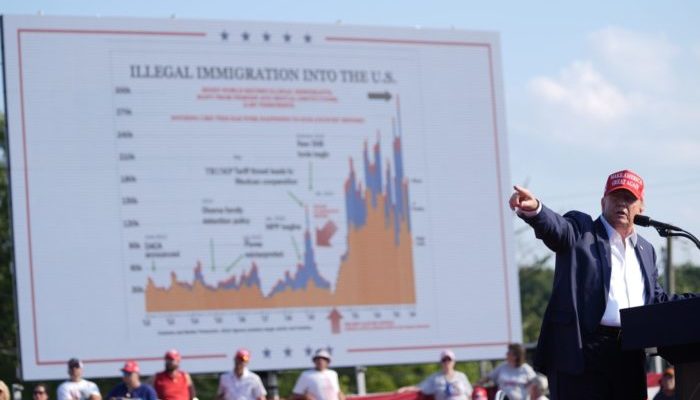(José Niño, Headline USA) Researchers at the Center for Immigration Studies find that immigrants, once concentrated in the Northeast, are increasingly settling in southern and western states, fueling historic population growth.
Conducted by Steven A. Camarota, Director of Research, and Karen Zeigler, a demographer with CIS, the study uses census data and government polls to track a sweeping and uneven rise in immigration across the country going back to 1850, with a particular emphasis on developments since 1980.
The report underscores a shift in immigrant settlement patterns over the past 45 years. Historically concentrated in the Northeast and Midwest, immigrants have increasingly moved to states in the South and West, with the South now hosting the largest number of foreign-born residents in the country.
Since 1980, the foreign-born population in the South has increased by 578 percent, the highest growth of any region, followed by the West (258 percent), the Midwest (199 percent), and the Northeast (141 percent). This transformation comes after a century in which the South had relatively low immigrant presence.
While New York held the top spot for foreign-born residents for over a century, California took that position in 1980 and maintains it through 2025. Texas and Florida, once minor immigrant destinations, now make up a quarter of all newly arrived foreign-born residents since 1980.
The data also indicates that from 1980 to 2025, the foreign-born population grew at least tenfold in Georgia, North Carolina, Nevada, and Tennessee. In 17 states, including Arizona, Utah, South Carolina, and Alabama, growth was more than four times the national average.
In terms of current population shares, 21 states and the District of Columbia now have populations that are at least 10 percent foreign-born. California leads with over 28 percent. For reference, only five states crossed that threshold in 1980.
Recent changes are especially striking. From Q1 2021 through Q1 2025, the foreign-born population increased by one-third or more in 16 states. Numeric increases were most pronounced in California, Texas, and Florida, but other states also witnessed significant gains, including Georgia, Indiana, Maryland, and Pennsylvania.
The surge in recent years is largely attributed to rising immigration during the Biden administration—thanks to its lax approach to regulating immigration—and is more broadly captured in the 2025 Current Population Survey.
The study sees immigration’s impact as increasingly national. Once focused in coastal and urban enclaves, foreign-born residents now influence demographic and policy conversations in virtually every region. With foreign-born residents growing eight times faster than the native-born population nationally—and 20 times faster in 17 states—the trend is poised to further reshape the American electorate, labor market, and community life well beyond traditional immigrant strongholds.
José Niño is the deputy editor of Headline USA. Follow him at x.com/JoseAlNino

